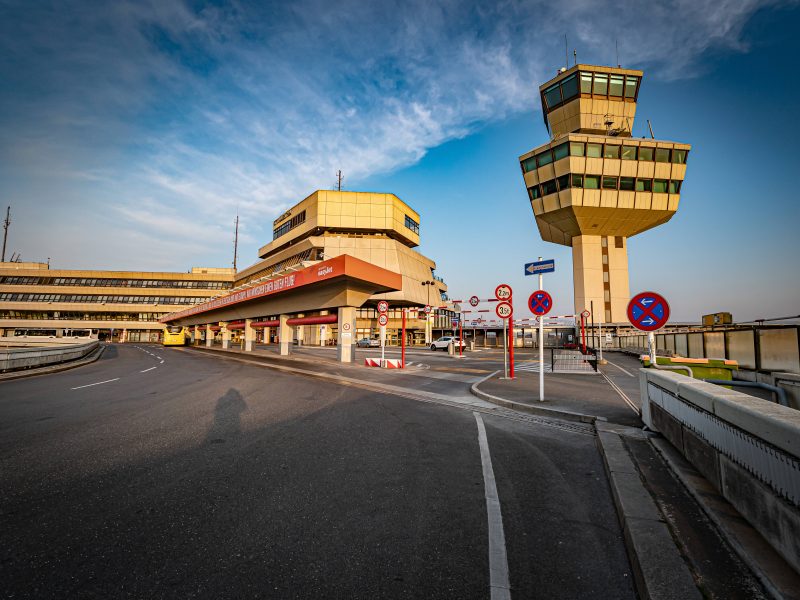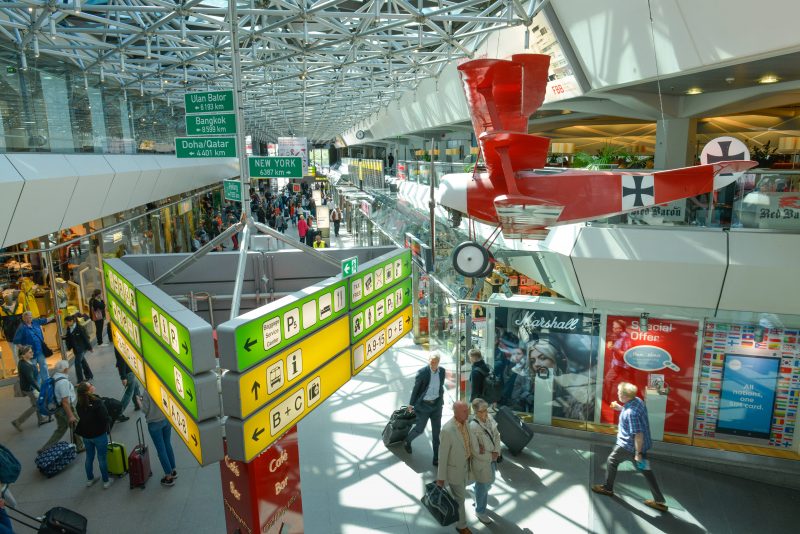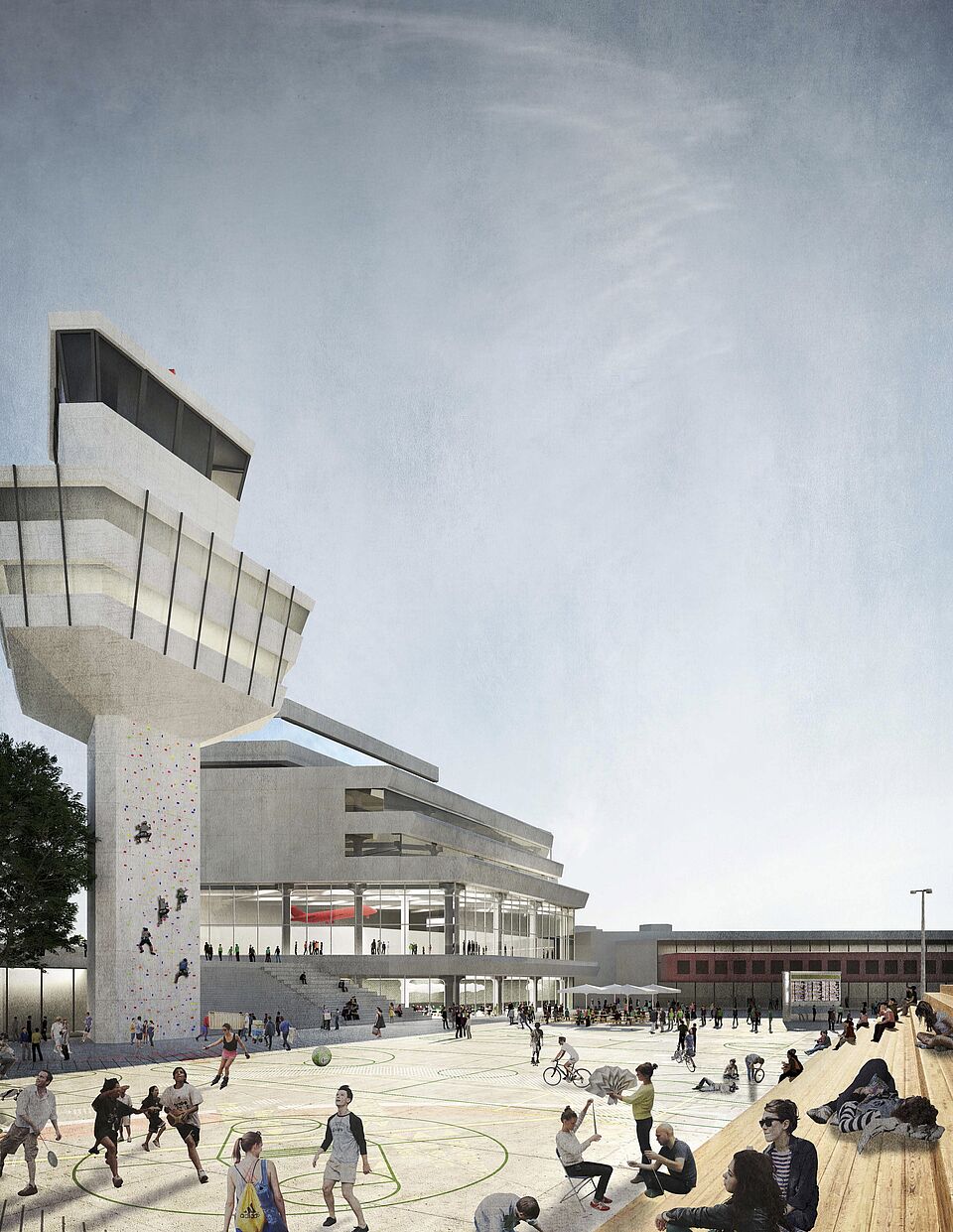Tegel’s much loved concrete airport is set to finally close later this year, probably forever. Paul Sullivan bids adieu to the Little Airport That Could….

A recent announcement that Tegel would have to close its doors for a couple of months to save money during the Covid-19 crisis, but probably wouldn’t reopen, was swiftly followed by the news that in fact the airport will remain operational until 8th November 2020, when the long-awaited Berlin Brandenburg International Airport (BBI) opens. The sudden reprieve, though, looks like it will only delay the inevitable permanent closure of the airport—news that has been met across social media with, on my social media timelines at least, mostly dismay.
Tegel is much-loved by Berliners, a fact that often baffles outsiders; after all there’s no real arguing away the fact that that it’s an outdated relic, built in the 70s to serve just six million passengers; that its quasi-brutalist, concrete-heavy design is a bit of an embarrassment compared to newer, slicker airports around Europe; and that a trip there or back usually involved a bouncy bus trip capable of sending your luggage flying several metres along the central aisle if you weren’t careful.
But over the decades, the airport’s proximity to the centre (just eight kilometres from Alexanderplatz), modest dimensions and hexagonal structure, and singular aesthetic—not to mention the fact historical figures like David Bowie to Ronald Reagan flew into it—generated a great deal of public affection. Even the currywurst shack outside, cunningly disguised as an S-Bahn carriage, seemed to symbolise something about the airport’s charming crappiness.

Tegel: Witness to Berlin’s chequered history
The original airport actually dates all the way back to 1948, when an initial structure was built in an impressive 90 days, in order to support the Berlin Airlift; the site it was built on had been formerly used for everything from building war planes to munitions factories, and the 2428 meter runway was at that point the longest in Europe. By 1968, Tempelhof Airport had reached maximum capacity, and many charter flight airlines move their services to Tegel. By 1975 it was the city’s most important passenger airport, and following German reunification in 1990, it was open to all German airlines.
The idea of closing the airport has been closely aligned with the building of the new Berlin Brandenburg International Airport (BBI), on the site of Schoenefeld Airport, but the constant delays of the latter has kept the former alive. Indeed, in 2015-2016, the city had to inject almost 20 million euros into its rickety infrastructure to keep it processing the approximately 20 million passengers that were by then flowing through it.
In 2017, an association called Tegel Bleibt Offen (“Keep Tegel Open”) organised a non-binding referendum, in which 56.1% of voters said they wanted to keep Berlin Tegel operating indefinitely. But with the news that the new Brandenburg airport is finally ready to open in October, authorities have decided to finally close the Little Airport That Could.

Tegel’s future: A hub for research and technology
Given the decision is hardly a sudden one, it should come as no surprise that there are already quite detailed plans for what will come afterwards. As long ago as 2008 it was decided that the site could be used as a new research and industrial park for urban technologies called Berlin TXL, supported with a new residential district called the Schumacher Quarter—plans which are now very much underway and led by a company called Tegel Projekt GmbH.
The park, which aims to provide space for over 1000 companies and around 20,000 employees, will serve as a meeting point for academics, researchers, industrialists and start-up investors to work on, and test, ideas and technologies relating to urban development in the 21st century. The central airport terminal will become the new home of the Beuth University of Applied Sciences, with over 2,500 students; the Berlin Academy of Fire and Rescue will occupy the large hangars; and Terminals B and D have been earmarked for congress areas and spaces for “high-tech entrepreneurs”.

The planned mixed-use Schumacher Quarter—48 hectares of land for 5,000 apartments accommodating over 10,000 people—is set to go up at the western section of Kurt-Schumacher-Platz, and will also include schools, day care centres, sports facilities, shops and green space. Another 4,000 apartments are also planned for the adjacent Cité Pasteur and TXL North quarters, all of which will be aiming for DGNB certification—sustainably created with an emphasis on climate-adaptation, water sensitive urban development, and responsible use of resources, energy, and waste, though none of this will be ready until the mid- 2030s at the earliest.
All of which, what with Tempelhof’s transformation into a public park and Schoenefeld’s imminent incorporation as a separate terminal of BBI, seems to complete the reconfiguration of the city’s airport system. Berlin’s future, at least in terms of aviation, seems to have finally arrived.
Paul Sullivan is a guidebook author, travel journalist and the founder/editor of Slow Travel Berlin. His words and images have appeared in The Guardian, BBC, Sunday Times Travel, The Telegraph, Nat Geo UK and more. He has lived in Berlin for 12 years.
[smbtoolbar]




